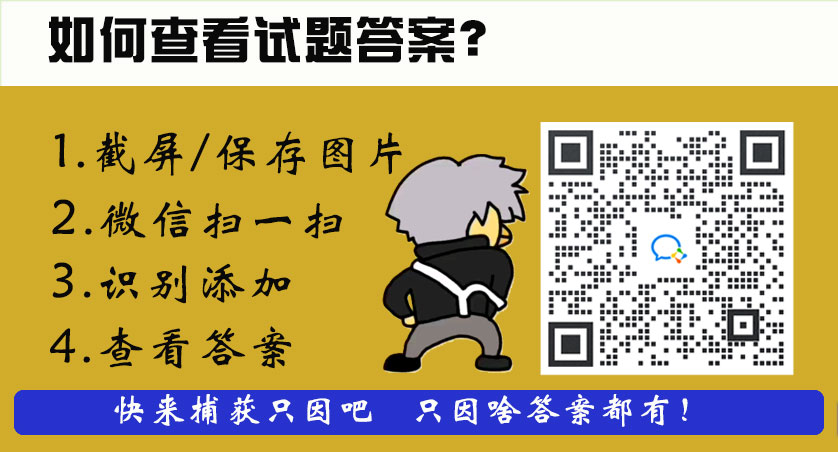学英语新高考高三课标第四期答案,我们目前整理分享关于学英语新高考高三课标第四期答案及其参考答案,2如需答案 请关注微信公众号:考不凡/直接访问www.kaobufan.com(考不凡)

1、学英语新高考高三课标第四期答案
2、英语测试报人教高一同步第40期
3、2022-2023阳光英语周刊八上第八期
3.Cold weather can be hard on pets,just like it can be hard on people.Sometimes owners forget that their pets are just as used to the warm shelter(住所)as they are.Some owners will leave their animals outside for a long period of time,thinking that all animals are used to living outdoors.This can put their pets in danger of serious illness.There are things you can do to keep your animal warm and safe.
Keep your pets inside as much as you can when the weather is bad.If you have to take them out,stay outside with them.When you're cold enough to go inside,they probably are too.If you must leave them outside for a long time,make sure they have a warm,solid shelter against the wind,thick bedding,and plenty of nonfrozen water.
If left alone outside,dogs and cats can be very smart in their search for warm shelter.They can dig into snow banks or hide somewhere.Watch them closely when they are left outdoors,and provide them with shelter of good quality.Keep an eye on your pet's water.Sometimes owners don't realize that a water bowl has frozen and their pet can't get anything to drink.Animals that don't have clean and unfrozen water may drink dirty water outside,which may contain something unhealthy for them.
64.What do we learn about pets from Paragraph 1?D
A.They are often forgotten by their owners.
B.They are used to living outdoors.
C.They build their own shelters.
D.They like to stay in warm places.
65.Why are pet owners asked to stay with their pets when they are out in cold weather?A
A.To know when to bring them inside.
B.To keep them from eating bad food.
C.To help them find shelters.
D.To keep them company.
66.If pets are left on their own outdoors in cold weather,they mayA.
A.run short of clean water
B.dig deep holes for fun
C.dirty the snow nearby
D.get lost in the wild
67.What is the purpose of this text?B
A.To solve a problem.
B.To give practical advice.
C.To tell an interesting story.
D.To present a research result. 试题答案
分析 本文是一篇说明文.文章给养宠物的人们提供了一些实用的建议.天气恶劣的时候把宠物放在家里?天气寒冷的时候注意让宠物有干净的水喝.
解答 DAAB
64、D 考查判断推理.根据-Sometimes owners forget that their cats are just as used to the warm shelter (住所) as they are.可知,猫等宠物也像人一样习惯于暖和的住所.所以D正确.
65、A 考查细节理解.根据第二段中的-If you have to take them out,stay outside with them.When you‘re cold enough to go inside,they probably are too.可知?当你感到冷的时候就会进房间,它们也是如此.所以A正确.
66、A 考查细节理解.根据文章第三段中的-a water bowl has frozen and their pet can‘t get anything to drin可知当水盆被冻之后,宠物就可能找不到干净的水喝.故选A.
67、B 考查作者的写作意图.根据第一段的中心句-There are things you can do to keep your animal warm and safe.可知,这是一篇说明文,其目的是为了给养宠物的人们一些实用的建议.故答案为B.
点评 做阅读时经常犯错的主要原因是,仅凭读过文章后残留在脑海中的一丝印象来勾选答案,这样便很容易掉入出题人故意设布下的题目陷阱.所谓阅读理解,对于题目的理解一定要忠实于原文,因此,每一道题都应该与原文作全面的对比与核查,再得出答案.也就是说,阅读理解的每一道题目,在原文都应该有明确的出处,我们把这一出处叫做原文相关句,(1)排除与原文相关句主题不一致的选项(2)排除与原文相关句态度相反的选项 (3)排除用于过于极端或负面的选项(4)注意结合文章主旨和主题去排除.
Can you believe your eyes? A recent experiment suggests that the answer to that question may depend on your age.
Martin Doherty, a psychologist at the University of Stirling in Scotland, led the team of scientists. In this experiment, Doherty and his team tested the perception(观察力) of some people, using pictures of some orange circles. The researchers showed the same pictures to two groups of people. The first group included 151 children aged 4 to 10, and the second group included 24 adults aged 18 to 25.
The first group of pictures showed two circles alone on a white background. One of the circles was larger than the other, and these people were asked to identify the larger one. Four-year-olds identified the correct circle 79 percent of the time. Adults identified the correct circle 95 percent of the time.
Next, both groups were shown a picture where the orange circles, again of different sizes, were surrounded by gray circles. Here's where the trick lies in. In some of the pictures, the smaller orange circle was surrounded by even smaller gray circles —making the orange circle appear larger than the other orange circle, which was the real larger one. And the larger orange circle was surrounded by even bigger gray circles—so it appeared to be smaller than the real smaller orange circle.
When young children aged 4 to 6 looked at these tricky pictures, they weren't fooled—they were still able to find the bigger circle with roughly the same accuracy(准确性) as before. Older children and adults, on the other hand, did not do as well. Older children often identified the smaller circle as the larger one, and adults got it wrong most of the time.
As children get older, Doherty said, their brains may develop the ability to identify visual context. In other words, they will begin to process the whole picture at once: the tricky gray circles, as well as the orange circle in the middle. As a result, they're more likely to fall for this kind of visual trick.
1.Doherty and his team of scientists did an experiment to evaluate_____________.
A. children's and adults' eye-sight
B. people's ability to see accurately
C. children's and adults' brains
D. the influence of people's age
2.When asked to find the larger circle,_____________.
A. children at 6 got it wrong 79 % of the time with no gray ones around
B. only adults over 18 got it right 95% of the time with gray ones around
C. children at 4 got it right about 79 % of the time with gray ones around
D. adults got it right most of the time with gray ones around
3.According to the passage, we can know that_____________.
A. a smaller orange circle appears bigger on a white background
B. an orange circle appears bigger than a gray one of the same size
C. a circle surrounded by other circles looks bigger than its real size
D. a circle surrounded by bigger ones looks smaller than its real size
4.Why are younger children not fooled?_____________.
A. Because their brain can hardly notice related things together.
B. Because older people are influenced by their experience.
C. Because people's eyes become weaker as they grow older.
D. Because they are smarter than older children and adults.